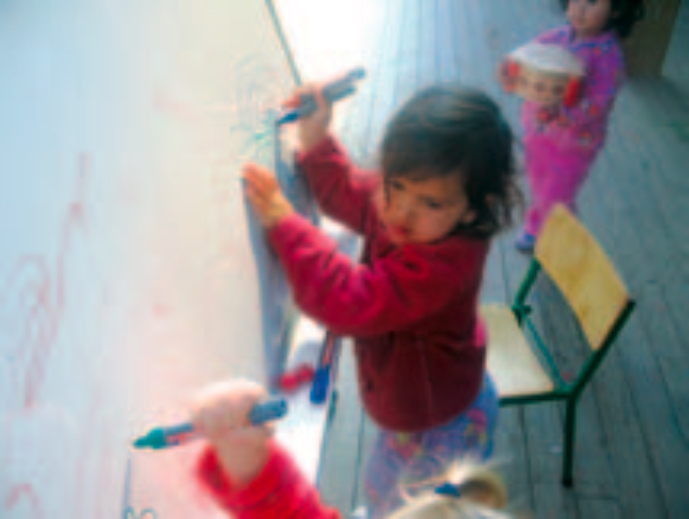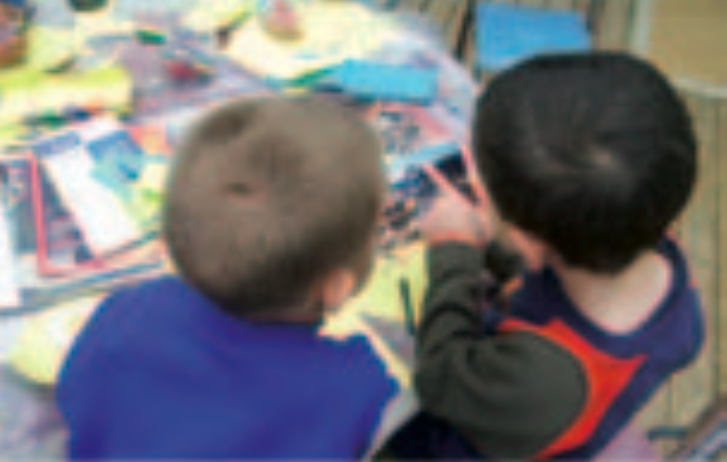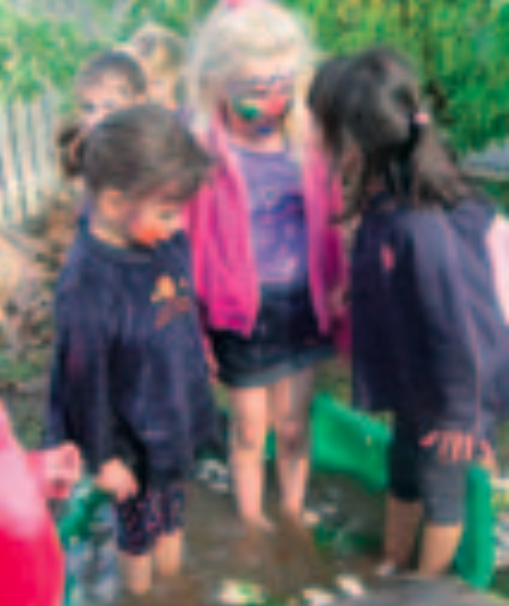Kei Tua o te Pae
Kei Tua o te Pae/Assessment for Learning: Early Childhood Exemplars is a best-practice guide that will help teachers continue to improve the quality of their teaching.
The exemplars are a series of books that will help teachers to understand and strengthen children's learning. It also shows how children, parents and whānau can contribute to this assessment and ongoing learning.
We are making improvements to our download-to-print functionality. So if you want a printed copy there are PDF versions available at the bottom of the main cover page.
The four domains of Communication – Ngā rohe e whā o te Mana Reo
Te Whāriki elaborates on the Communication/Mana Reo strand as follows:
"Ko tēnei mea ko te reo he matapihi e whakaatu ana i ngā tikanga me ngā whakapono o te iwi … [Ko te] tūmanako mō te mokopuna … Kia mōhio te mokopuna ki tōna ao, ki te ao Māori, te ao o nāianei, me te ao o āpōpō, mā te reo Māori.5
The languages and symbols of their own and other cultures are promoted and protected. Children experience an environment where: they develop non-verbal communication skills for a range of purposes; they develop verbal communication skills for a range of purposes; they experience the stories and symbols of their own and other cultures; they discover and develop different ways to be creative and expressive." 6
The four interwoven domains of Communication/Mana Reo are described (as goals) in the English text of Te Whāriki, and each domain includes indicative learning outcomes.
The exemplars presented in this book can each be allocated to one of these four domains.
-
Non-verbal communication skills for a range of purposes
-
Non-verbal communication skills include expressing feelings, ideas, and questions in a wide range of ways. Teachers who know the children well learn to “read” the signs of infants and toddlers. Children learn to communicate using a wide range of media: the exemplar “Drawing and chanting together” gives examples.
“Introducing the computer” is an exemplar about children being introduced to one type of information technology. More exemplars about information technology are included in Book 20, and further exemplars about non-verbal communication are included in books 16–19.

-
-
Verbal communication skills for a range of purposes
-
Assessments value the interactions between adults and children and with peers. They are specific about those aspects of verbal communication that the children are developing. The exemplar “Starting with photos” illustrates how powerful photographs are in initiating a network of other communication modes and in maintaining a connection with the home.

Working theories developed by teachers are relevant here; one teacher’s working theory relates to the value of te reo Māori.7 All early childhood teachers in Aotearoa New Zealand have the responsibility of recognising that te reo Māori is the poutokomanawa of mana Māori. This recognition and a range of responses to it should be evident in assessments. The exemplars “Leo and te reo Māori” and “Tapahia me ngā kutikuti – Cutting with scissors” (in Book 13) are two examples of different ways teachers recognise and respond to the importance of Māori language in the early childhood setting. “Rahmat and the snakes” is about communicating with a child for whom English is an additional language.
The exemplar “Fuka, Colette and Fea” illustrates continuity in communication over time, especially in regard to the children’s developing facility with language as evidenced by their storytelling.9 Fuka’s learning story is also an example of personalising documentation, with the joint recording of the story “The Day Fuka’s Hen Came to Kindergarten” mediating the development of communication competence.
-
-
Stories and symbols of their own and other cultures
In Te Whāriki, one of the indicative outcomes for the domain of Communication/Mana Reo is described as follows:
"Children develop an understanding that symbols can be “read” by others and that thoughts, experiences, and ideas can be represented through words, pictures, print, numbers, sounds, shapes, models, and photographs.
page 78"
Assessments where the “one hundred languages”10 of children are highlighted as domains of learning are covered in more detail in books 16–20 of this series.
Assessments note children’s dispositions, understandings, and skills in recognising symbol systems and using tools to make meaning and communicate. They also suggest further directions. Examples of documented assessments in books 11–15 support Paul Black and Dylan Wiliam’s research finding that promoting a culture of success is an effective formative assessment strategy (see Research findings in Book 10).
Narrative assessments that resist “deficit theorising”, and are often dictated by children, can in the same way raise expectations for all children and contribute to successful learning outcomes.
The exemplar “Te marae” illustrates the children at one kindergarten revisiting some of the stories and symbols of Aotearoa New Zealand. “Sofia the reader” chronicles how Sofia is learning about books and reading, while in “Phoebe’s puzzling morning”, Phoebe and a teacher make meaning together from the symbols and text implicit in some jigsaw puzzles.
-
Different ways to be creative and expressive
-
This domain relates to the topics of music, art, drama, and dance. It links closely with the Exploration/Mana Aotūroa strand, especially where it refers to pretend or dramatic play. The dramatic play in “Harriet’s mermaid” illustrates a number of ways to be creative and expressive, including making a movie, while “Jorjia’s imaginary turtle” documents a two-year-old’s imaginary play.

-
